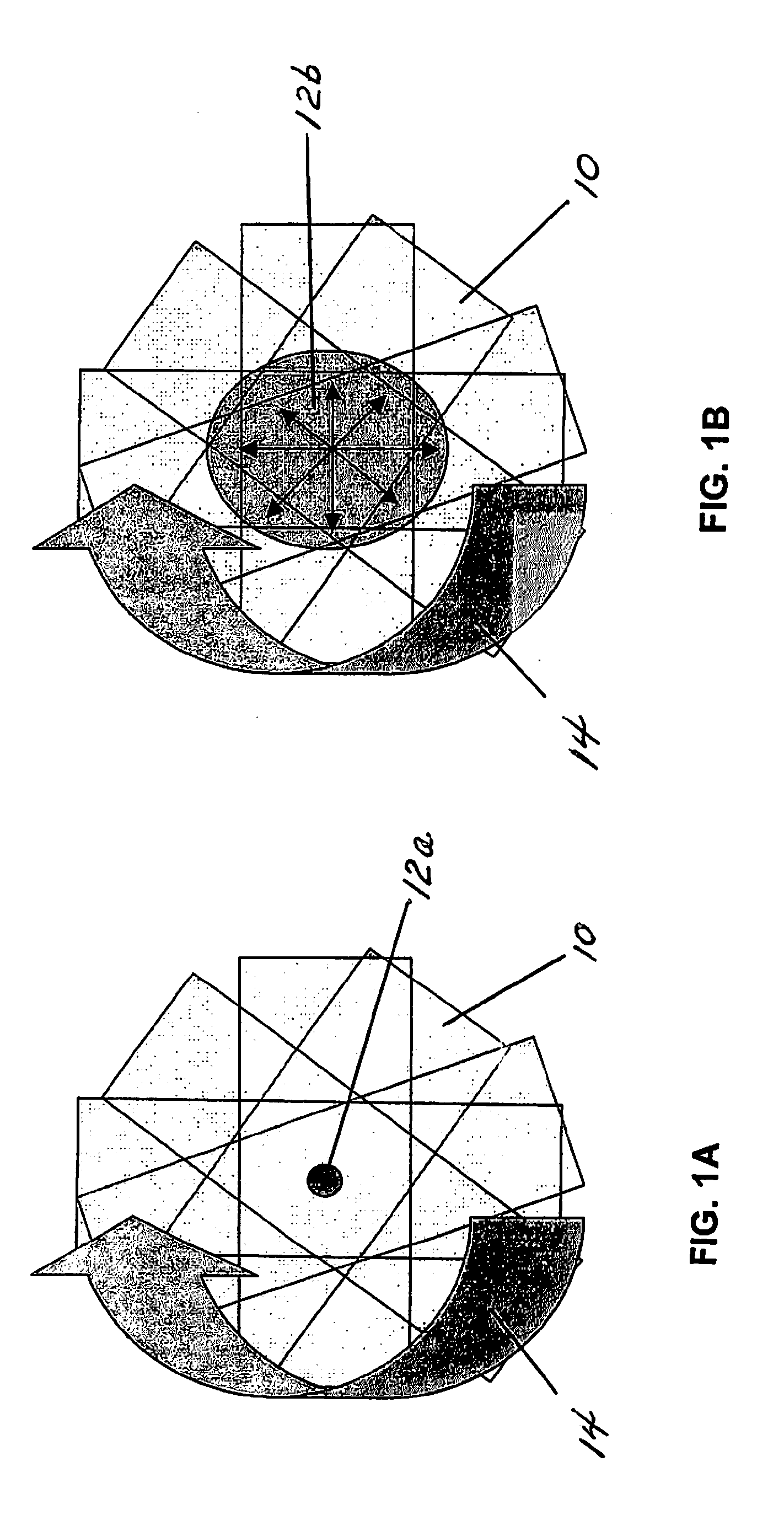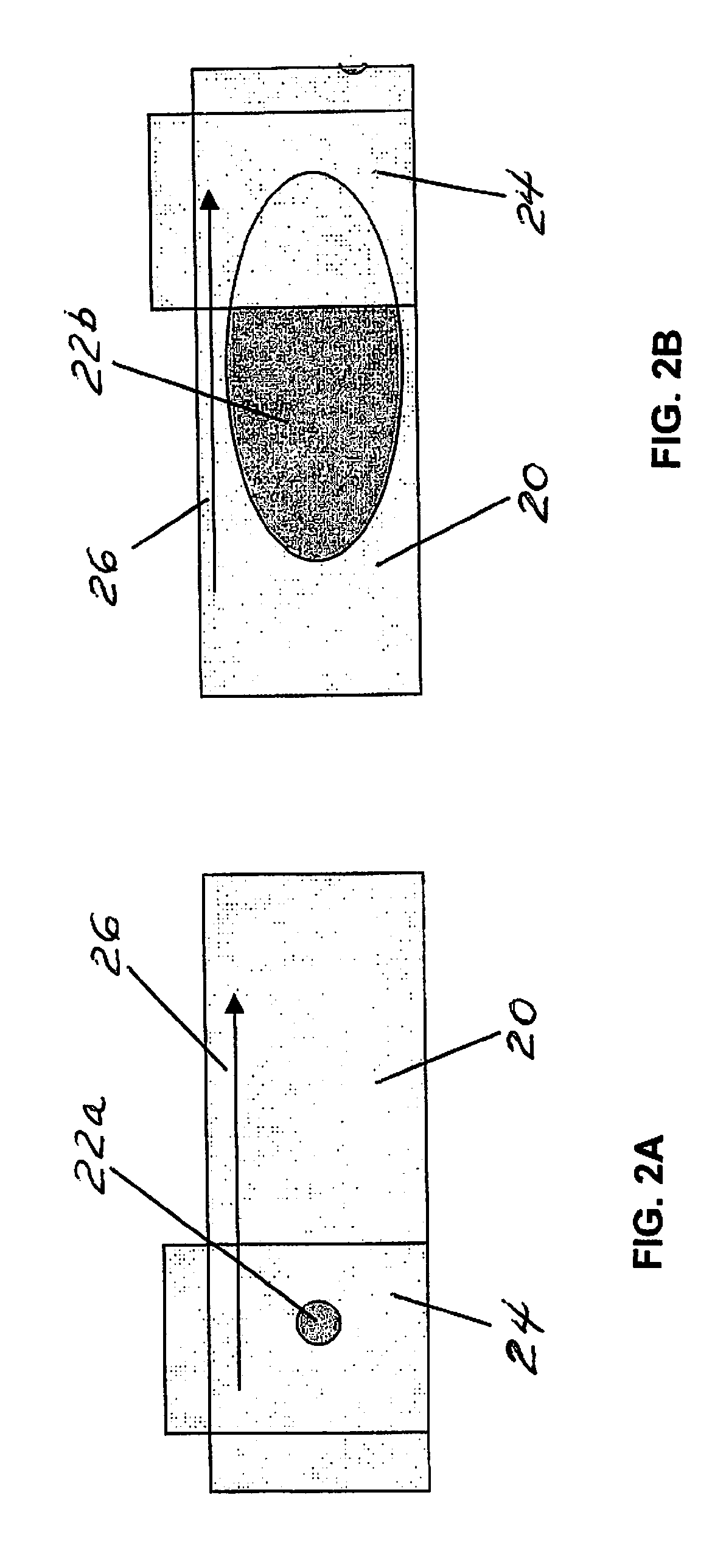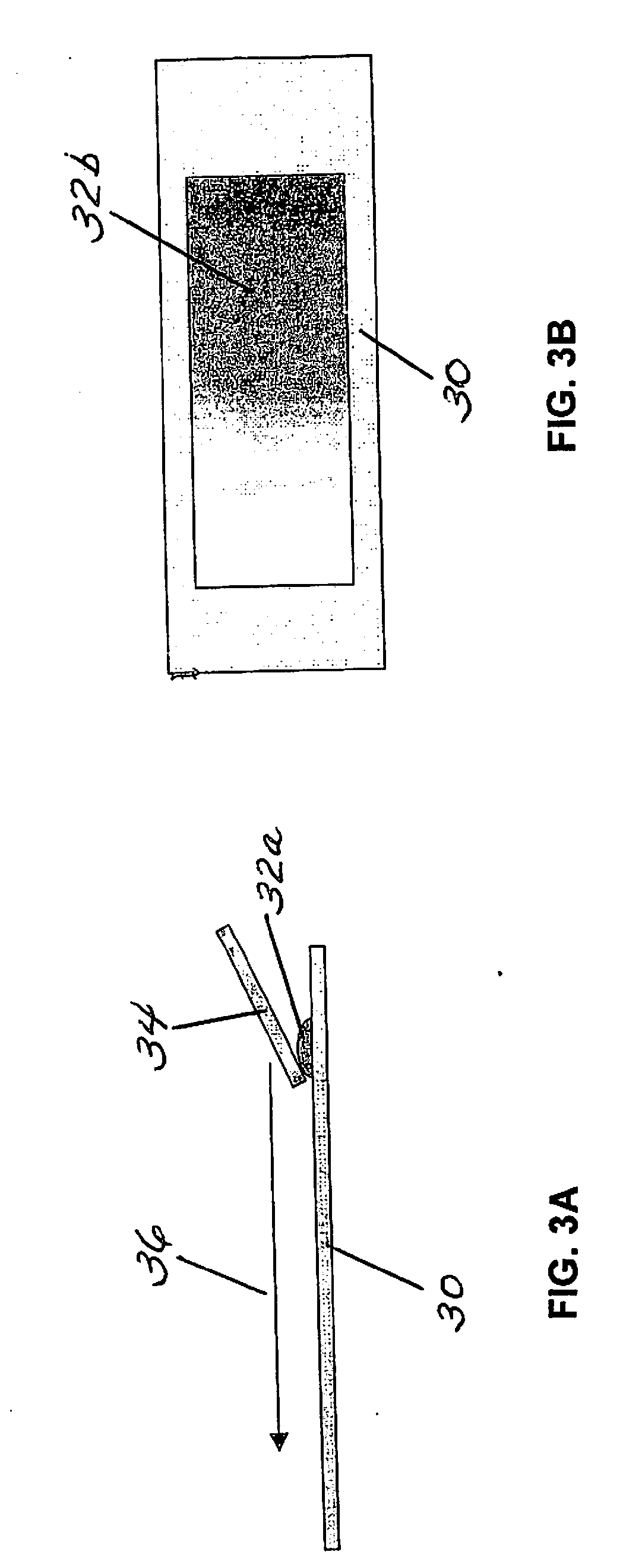Method for performing a blood count and determining the morphology of a blood smear
a technology of blood smear and morphology, which is applied in the field of performing a blood smear and determining the morphology of the blood smear, can solve the problems of insufficient inability to determine the absolute number of cells present in the blood smear, and inability to achieve sufficient control of the smear
- Summary
- Abstract
- Description
- Claims
- Application Information
AI Technical Summary
Benefits of technology
Problems solved by technology
Method used
Image
Examples
example 1
[0080]This example illustrates one approach for using a blood smear technique described herein to carry out a quantitative blood count.
[0081]Referring now to FIG. 7, a sample of whole blood 100 drawn from a sample tube “S” and having a known volume is deposited on a microscope slide 110 in an initial drop 120, e.g., 50 microliters. It is assumed that no blood is lost in the process for creating the blood smear. Accordingly, all of the cells in the blood sample are accounted for in the blood smear. The low power imaging device measures optical density or reflectance resulting from the hemoglobin in a piece-wise fashion (i.e., via pixels) across the entire area of the blood smear. The low power imaging device can be a 10× objective lens of a microscope. It is assumed that the optical density or reflectance value of each piece of the image (i.e., pixel) is proportional to the amount of red blood cells in the piece. The term “piece” is synonymous with the smaller section 68, shown in FI...
example 2
[0085]Referring now to FIG. 8A, several different blood smears, ten (10) in number, are shown. These blood smears represent blood smears made with different samples of whole blood containing varying amounts of hemoglobin, which causes the overall optical density or reflectance of the blood smears to differ in intensity. FIG. 8B shows the thick end of each blood smear and the thin end of each blood smear of FIG. 8A. By means of an appropriate scanning procedure, the optical density profile of the blood smear can be graphed. Each point on the X-axis of the graph represents the distance of a point of the blood smear on the slide, as measured from the point of origin of the drop of whole blood on the slide. The Y-axis of the graph represents the optical density or reflectance at a given point of the blood smear on the slide, as measured from the point of origin of the drop of whole blood on the slide. FIG. 8C shows the optical density profiles or reflectance profiles of the blood smears...
example 3
[0086]This example illustrates a technique for determining a blood count wherein only a narrow portion of the minor axis of the microscope slide is used. Instead of using the approach described in Example 1, the values corresponding to a line of pixels though the center of a slide can be measured by the low power imaging system. It should be noted that the line being scanned has two dimensions, but the minor dimension of the line is much narrower than the minor dimension that is scanned is Example 1. This technique can be used if the device employs a single detection beam through which the slide is moved, i.e., scanned, while the optical density values or reflectance values are recorded. While not being a true imaging system, the same result is produced by scanning a line rather than the plurality of lines needed to make up a larger area. It is believed that this embodiment is less expensive that the embodiment described previously.
[0087]If the pixel values along the line being scan...
PUM
| Property | Measurement | Unit |
|---|---|---|
| volume | aaaaa | aaaaa |
| reflectance | aaaaa | aaaaa |
| thickness | aaaaa | aaaaa |
Abstract
Description
Claims
Application Information
 Login to View More
Login to View More - R&D
- Intellectual Property
- Life Sciences
- Materials
- Tech Scout
- Unparalleled Data Quality
- Higher Quality Content
- 60% Fewer Hallucinations
Browse by: Latest US Patents, China's latest patents, Technical Efficacy Thesaurus, Application Domain, Technology Topic, Popular Technical Reports.
© 2025 PatSnap. All rights reserved.Legal|Privacy policy|Modern Slavery Act Transparency Statement|Sitemap|About US| Contact US: help@patsnap.com



